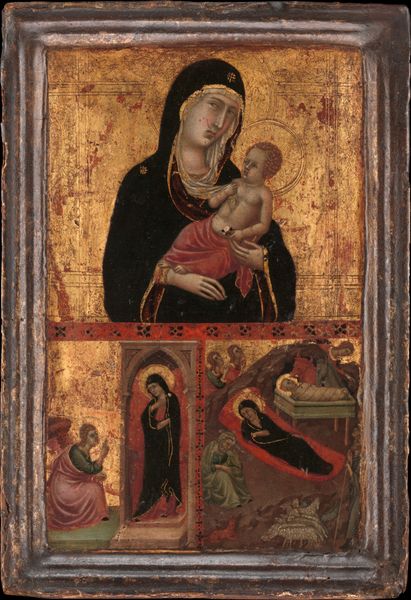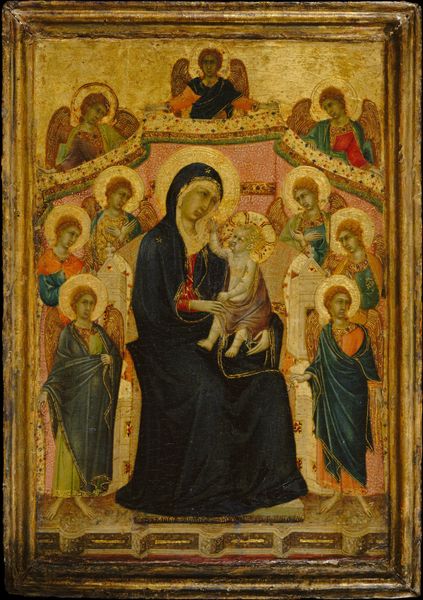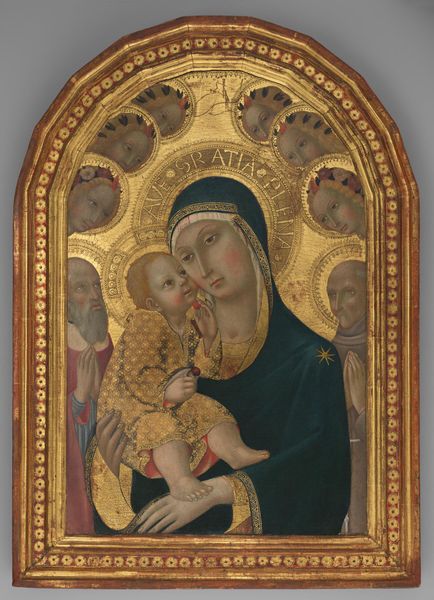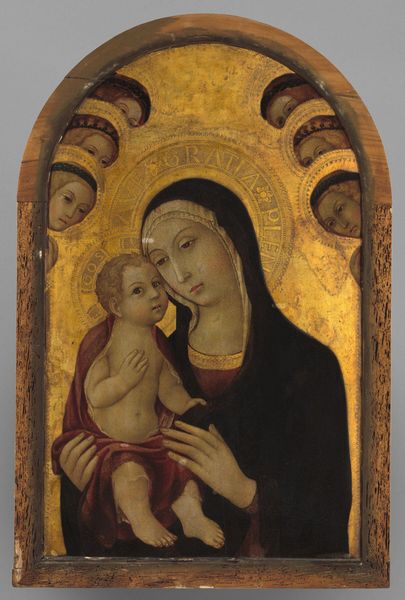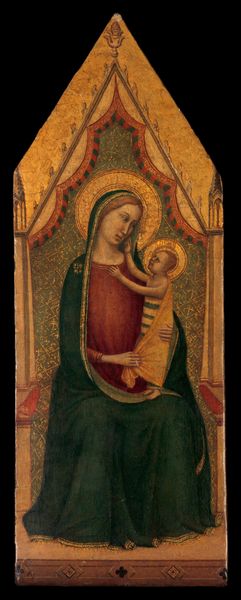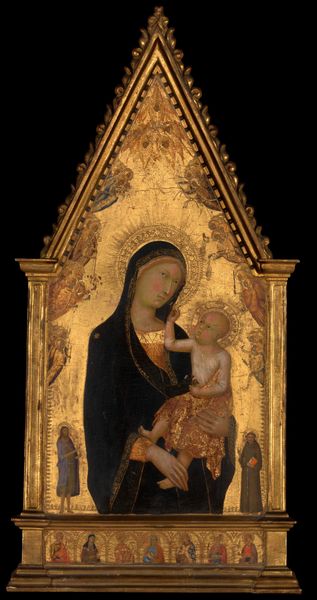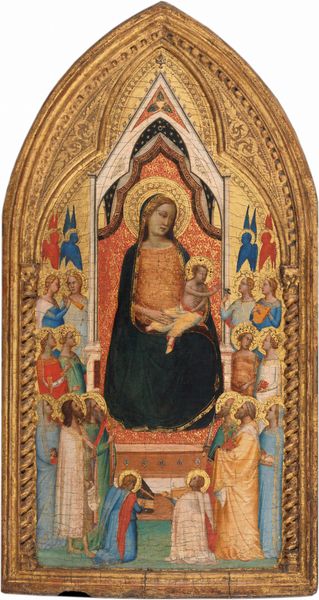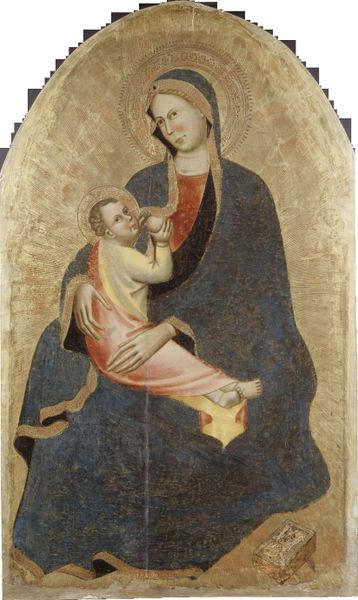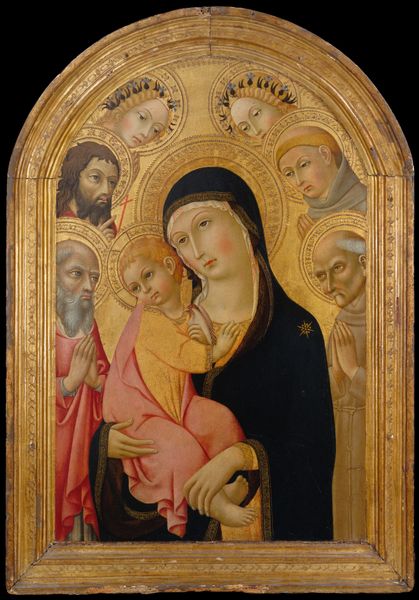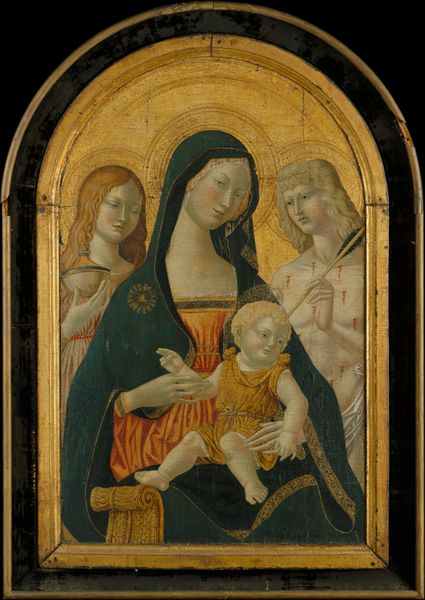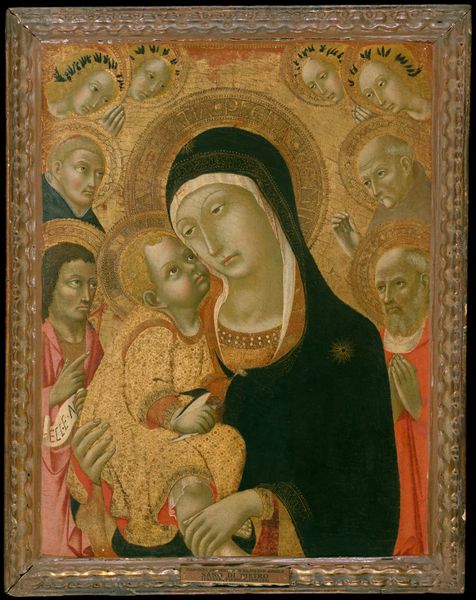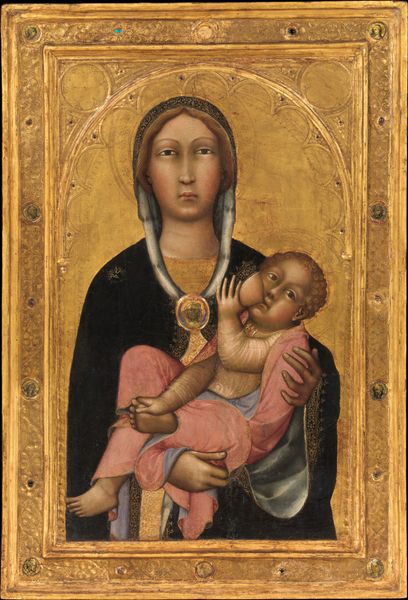
Madonna and Child Enthroned with Two Donors 1315 - 1330
0:00
0:00
panel, tempera, painting
#
portrait
#
medieval
#
panel
#
tempera
#
painting
#
sculpture
#
figuration
#
madonna
#
oil painting
#
child
#
italian-renaissance
Dimensions: Overall, with engaged frame, 20 3/4 x 11 3/4 in. (52.7 x 29.8 cm)
Copyright: Public Domain
Curator: We're looking at "Madonna and Child Enthroned with Two Donors," a tempera and gold on panel painting made circa 1315-1330, likely by an artist from the circle of Duccio. Editor: The sheer volume of gold leaf practically screams wealth and devotion, doesn’t it? I'm immediately struck by its intensity and how it emphasizes the status of the Madonna. Curator: The gold background is traditional, evoking a sacred space, removing the scene from earthly time. Notice, too, the deliberate flatness and frontality – techniques aimed at focusing the viewer on the spiritual, rather than the physical, reality. The halos, too, emphasize divine power. Editor: Exactly. I’m interested in the actual application, the labor. This wasn’t just splashing on paint. Preparing the panel, applying the gold leaf so painstakingly, the layering of the tempera – each stage tells us about the artistic practices and economic structures that made such lavish displays possible. Curator: And let’s not overlook the donors themselves, kneeling at the Madonna’s feet, almost engulfed by her cloak. This positioning speaks volumes about their social status and their need for divine intercession. Their inclusion in the image ensured their continued memory. Editor: Right, a material transaction made visible! Commissioning this assured earthly and, theoretically, heavenly rewards. Looking closely, can we deduce anything about the pigment sources, or the specific type of wood? I’d love to know the sourcing networks that fueled this level of production. Curator: The deep blues of the Virgin's robe were likely created with lapis lazuli pigment, while the reds are probably cinnabar. These pigments weren’t cheap – adding further evidence about the cost of production! This color selection evokes established emotional symbolism that the faithful in that period understood well. Editor: I think about the artisan’s hands that shaped this, the supply chains that sustained the studio…it pulls the divine down to earth, in a way. This painting really illuminates not just faith but production and power. Curator: I find it remarkable how this image served to make divine figures palpable to everyday people, becoming visual shorthand for cultural ideas about piety, family, and grace. Editor: And for the tangible costs of such faith. It truly prompts a reflection on how art serves as a powerful, enduring marker of social relations.
Comments
No comments
Be the first to comment and join the conversation on the ultimate creative platform.
